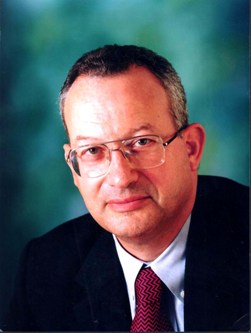 Ted Nield writes:
Ted Nield writes: The end of summer, for science journalists in the UK at least, is signalled not by the yellowing leaves, autumnal mists or the sound of 12-bores echoing through the covey, but by the arrival of the invitation to the embargoed press conference for the British Science Association’s Annual Festival of Science.
“Ah well, another year gone. How’s it been? You going for the duration? Which hotel did they put you in? Oh bad luck. Things must be worse at your place than they're saying…” and so on. All in all, this event does not find science journalists at their perkiest. Even a week out of the office and a twin room at a Premier Inn somewhere under Spaghetti Junction hardly makes up for the fact that it’s all rather a nasty jolt after the summer hols.
The first order of business, after Sir Roland Jackson has welcomed the media and told us how important the BA thinks we are, is the preview of the incoming President’s Big Speech, which is delivered on the Festival opening day (Tuesday 14 September) and whose contents are embargoed for one minute after midnight on that day. This year, after the tenure of Sir Bob May, former Royal Society President, it’s the turn of Lord Sainsbury of Turville, the former science minister.
Names may change but the order of business stays the same. Each year the President introduces, through a preview of his speech, something that the Association describes not entirely laughingly as the Festival “theme”. It is just as well that he has this opportunity, because otherwise any kind of theme is always completely undetectable – though organisers of sessions (like the Geological Society) have to bear it in mind when proposing topics. This is what makes the BA a bit of a
roman à clef – everything makes sense as long as you know beforehand what it’s supposed to be about.
This year, Lord Sainsbury has chosen as his theme “Making people’s lives better through science” – though what he will be saying in detail, of course, I can’t tell you until one minute after midnight next Tuesday. I can however reveal that the Geological Society’s session will be held on Sunday 19th, the Festival’s last day, and be aimed squarely at the good people of Birmingham, explaining how geoscience contributes to improving their lives.
Titled Unpoisoning the Land, the subject is of course the remediation of brownfield sites – something of which our
soi disant Second City is not short. It will take place between 11.00 and 13.00 on that day, and be chaired by Prof. Paul Nathanail of Nottingham University – the Engineering Group’s 2009 Glossop Lecturer. The price at the door will be a princely £3.00.
The BA Festival, as we used to, but must now not, call it (it having morphed last year into the “British Science Association Annual Festival of Science”) is the biggest and longest established of its kind in Europe, generating more media coverage every year than any comparable event. The Festival consists of more than 250 individual sessions and exhibitions, involving about 350 scientists engineers and commentators and taking place all over the City of Birmingham - and not only on the campus at Aston University.
The BA says it expects a footfall of around 75,000 visitors – though that audience is dwarfed by the millions who hear of the Festival through the activity of the Festival’s very busy Media Centre, where a small army of sweaty hacks bash out the stuff from early morn until opening time. Veteran readers of
Geoscientist’s
Media Monitor section may well remember this piece describing the media’s typical day at the BA. It won’t have changed that much, except there will be more foreign journalists and more people writing for non-traditional media (and complaining that the ether does not have space constraints).
During the 2010 Festival, Sarah Day will be out and about, while I shall be based I the press centre, observing the media at work - and possibly also at play. Join us on this blog for the Festival buzz.